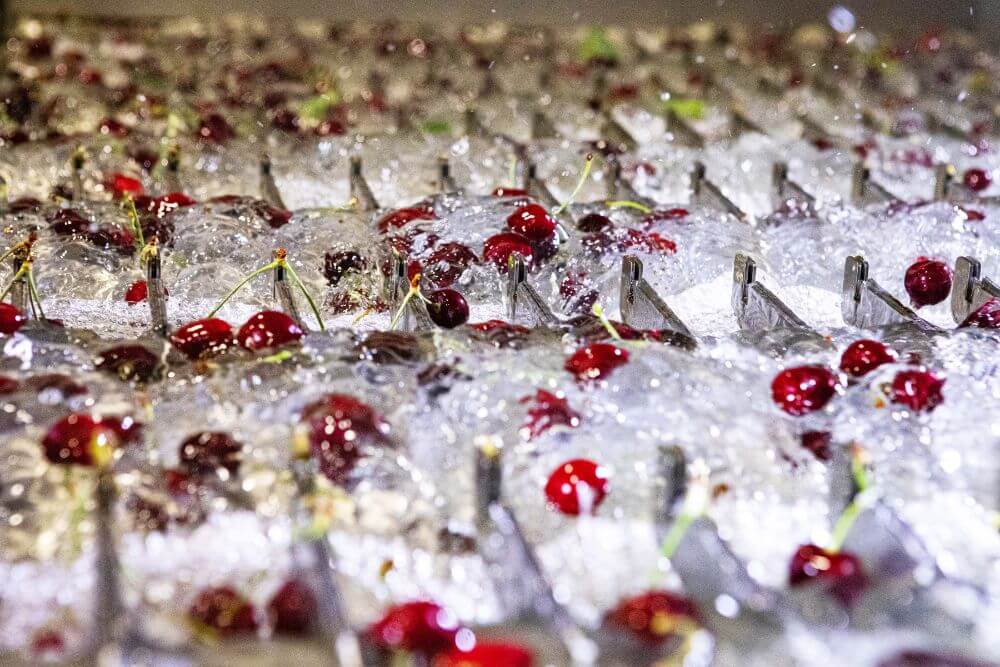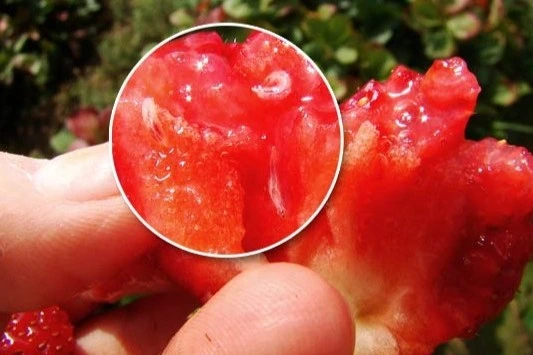The climate change we are currently facing creates uncertainty about the weather conditions of each season. We have observed how temperatures and rainfall vary significantly from year to year, forcing us to stay alert and adapt production strategies season by season.
Regarding the winter chilling requirements of deciduous species, temperate climate regions are now facing a major challenge: the rise in winter temperatures due to climate change poses a growing threat to the synchronization of the phenological cycle of these crops.
The lack or insufficient accumulation of chilling – increasingly common – hinders the release from endodormancy, causing irregular budbreak, uneven flowering, poor fruit set, and reduced quality and quantity of production. In cherries, for instance, the chilling deficiency has led to partial budbreak, lower fruit set, and yield reductions.
Moreover, exposure to early warm events may induce premature dormancy release, increasing the risk of damage from late frosts.
Strategies and Models to Face the Change
In response, more accurate phenological models are being developed, integrating real-time climate data and genetic parameters to predict dormancy dynamics more reliably.
At the same time, researchers are working on genetic improvement strategies and agronomic practices, such as the use of hydrogen cyanamide, the application of biostimulants, shade nets, and other tools to compensate for the lack of winter chilling in species adapted to temperate climates.
However, these techniques and strategies are not always effective, as climatic conditions – especially in autumn and winter – vary from year to year and region to region.
Therefore, it is essential to understand the key factors regulating dormancy entry, maintenance, and release, as well as what happens inside the buds during this period.
Dormancy and How It Works
Dormancy is a key physiological strategy for fruit crops grown in temperate climates, allowing them to survive adverse environmental conditions, especially winter cold.
This process occurs in two main phases: endodormancy (entry) and ecodormancy (release), both strongly regulated by environmental factors such as temperature, photoperiod, and to a lesser extent, water availability and abiotic stress.
Dormancy Entry (Induction)
Dormancy entry is mainly induced by a reduction in photoperiod and the progressive temperature drop during autumn. These signals are perceived by specific receptors in meristematic tissues and trigger a cascade of hormonal responses, particularly an increase in abscisic acid (ABA) and the repression of gibberellins (GA), which inhibit cell growth and promote the dormant state.
In species such as Malus domestica and Prunus avium, early perception of short days activates genes from the DAM (Dormancy-Associated MADS-box) family, which are major regulators of dormancy.
During the transition to endodormancy, one of the most significant cellular responses is the accumulation of callose (β-1,3-glucan) in plasmodesmata – the channels that connect cells through their walls. This buildup reduces cellular connectivity, acting as a barrier to the passage of signals, metabolites, and hormones.
Callose functions include isolating the apical meristem, reducing membrane permeability, limiting intercellular transport of growth-promoting hormones (like gibberellins), and providing protection from abiotic stress by hindering the spread of pathogens or damage signals.
Callose synthesis is stimulated by short photoperiods and low temperatures, in conjunction with DAM gene expression and increased ABA levels.
Dormancy Release
Prolonged exposure to cold triggers physiological and molecular changes that lead to the deactivation of DAM genes. In species like Prunus persica and Prunus avium, chilling accumulation progressively reduces the expression of these genes, allowing bud development.
As winter progresses, callose is degraded by enzymes such as β-1,3-glucanase, restoring communication between cells through plasmodesmata. This is a key step in reactivating bud metabolism, cell division, and budbreak.
Cold also alters the hormonal balance: ABA levels decrease while gibberellins increase, stimulating cell growth. Epigenetic mechanisms – such as DNA methylation and histone modifications – have also been observed to play a role in dormancy regulation in response to cold.
The transition to ecodormancy, and eventually to vegetative growth, occurs when temperatures begin to rise and growing degree days above a thermal threshold accumulate. During this phase, gibberellins, cytokinins, and auxins increase, stimulating metabolism and shoot elongation.
Recent studies on grapevine (Vitis vinifera) and kiwifruit (Actinidia deliciosa) confirm that spring warming regulates the activation of genes such as EBB1 and GA20ox, promoting vegetative recovery.
Practical Relevance of This Knowledge
A deep understanding of the physiological and molecular mechanisms that regulate dormancy in deciduous fruit species is essential not only to predict the impact of climate change on phenology, but also to design effective and adaptive management strategies.
In an increasingly unstable climate, this knowledge enables us to adjust agricultural practices in time, select more resilient cultivars, and apply technologies that mitigate the effects of mild or irregular winters.
Only with a solid technical foundation on the internal processes governing dormancy entry, maintenance, and release can we make informed decisions to safeguard the productivity, sustainability, and future of fruit growing in temperate regions.
Source: Green Network
Image source: Green Network
María Paz Rosés
Consultant in Soil Management and Integrated Nutrition
Cherry Times - All rights reserved












